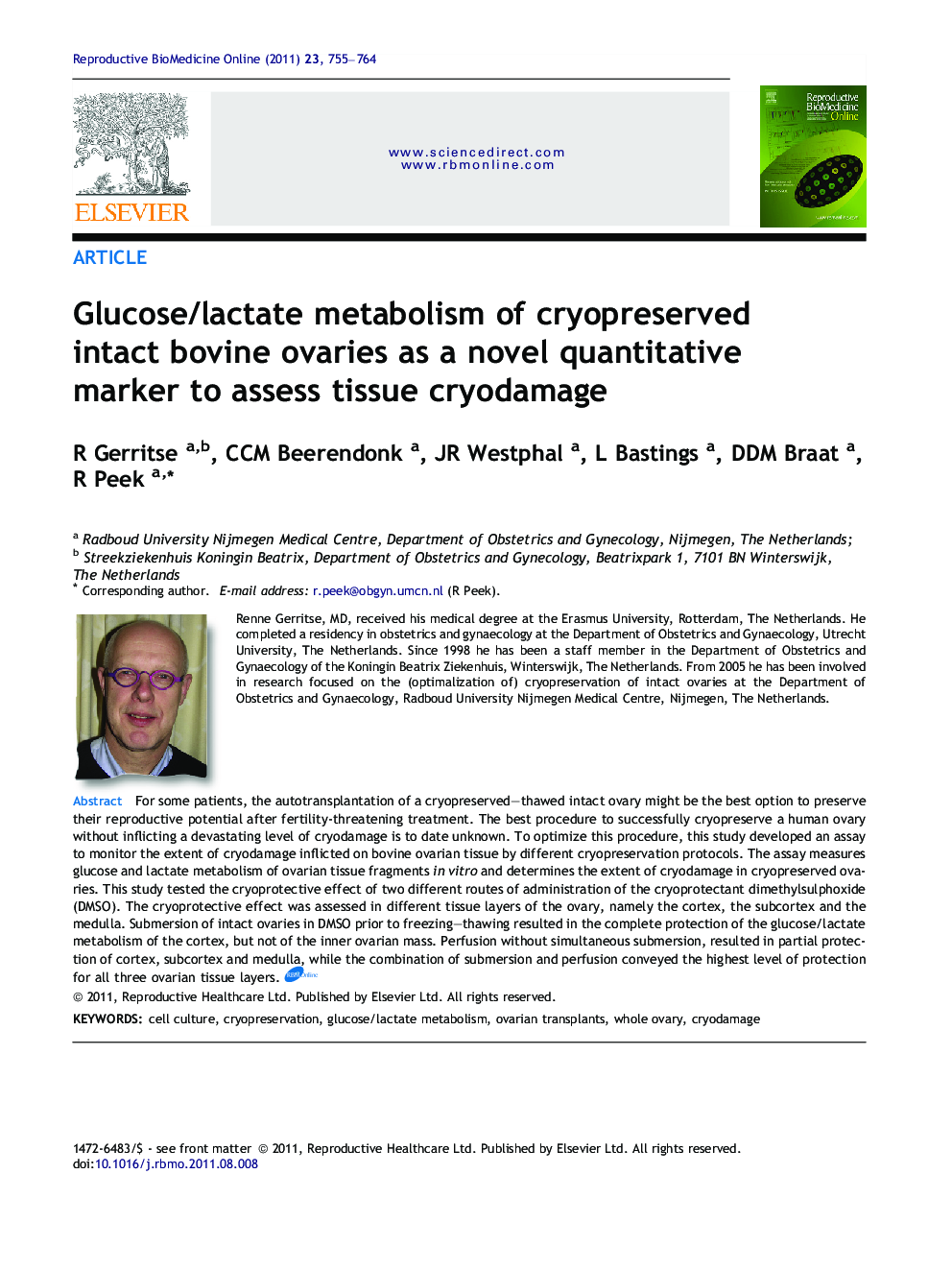| کد مقاله | کد نشریه | سال انتشار | مقاله انگلیسی | نسخه تمام متن |
|---|---|---|---|---|
| 3971232 | 1256756 | 2011 | 10 صفحه PDF | دانلود رایگان |

For some patients, the autotransplantation of a cryopreserved–thawed intact ovary might be the best option to preserve their reproductive potential after fertility-threatening treatment. The best procedure to successfully cryopreserve a human ovary without inflicting a devastating level of cryodamage is to date unknown. To optimize this procedure, this study developed an assay to monitor the extent of cryodamage inflicted on bovine ovarian tissue by different cryopreservation protocols. The assay measures glucose and lactate metabolism of ovarian tissue fragments in vitro and determines the extent of cryodamage in cryopreserved ovaries. This study tested the cryoprotective effect of two different routes of administration of the cryoprotectant dimethylsulphoxide (DMSO). The cryoprotective effect was assessed in different tissue layers of the ovary, namely the cortex, the subcortex and the medulla. Submersion of intact ovaries in DMSO prior to freezing–thawing resulted in the complete protection of the glucose/lactate metabolism of the cortex, but not of the inner ovarian mass. Perfusion without simultaneous submersion, resulted in partial protection of cortex, subcortex and medulla, while the combination of submersion and perfusion conveyed the highest level of protection for all three ovarian tissue layers.Cancer treatment, such as chemo- or radiotherapy, may also affect the female reproductive organs, resulting in reduced or even absent fertility. To counteract these unwanted side effects of the treatment, several options exist to preserve fertility in these women. One of the options includes the removal of an intact ovary prior to the start of anti-cancer treatment, and its storage in liquid nitrogen. After cure of the disease, the ovary can than be thawed and retransplanted into the patient. The optimal procedure to successfully cryopreserve a human ovary without inflicting a devastating level of cryodamage is to date unknown. Certain chemical compounds, called cryoprotectants, are able to protect cells or tissues against cryodamage. Saturating the tissue with sufficient levels of cryoprotectant is the main challenge of optimizing the freeze–thaw procedure. In this paper we analysed factors that determine the efficacy of a given cryopreservation protocol, using a recently developed assay based on the consumption of nutrients (glucose) and production of waste products (lactate) by living ovarian tissue. This consumption/production decreases when the tissue is damaged by the freezing–thawing process. We tested the efficacy of two different administration routes of the cryoprotectant DMSO to the ovary and found that a combination of the two routes was optimal for the delivery of sufficient amounts off DMSO to the ovary. Our results signify an important step towards the design of the optimal protocol for using cryopreservation and retransplantation of intact ovaries for fertility restoration.
Journal: Reproductive BioMedicine Online - Volume 23, Issue 6, December 2011, Pages 755–764